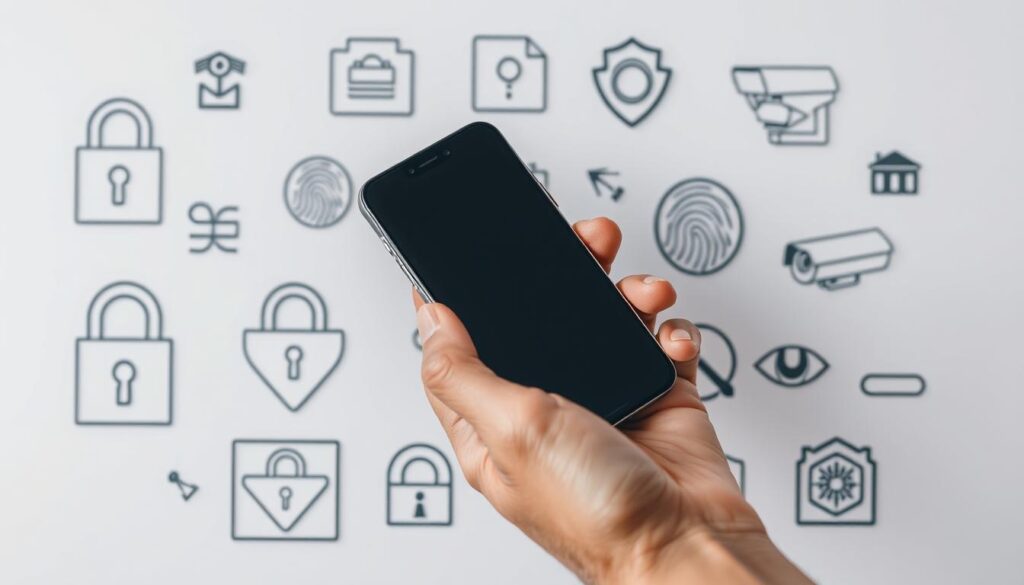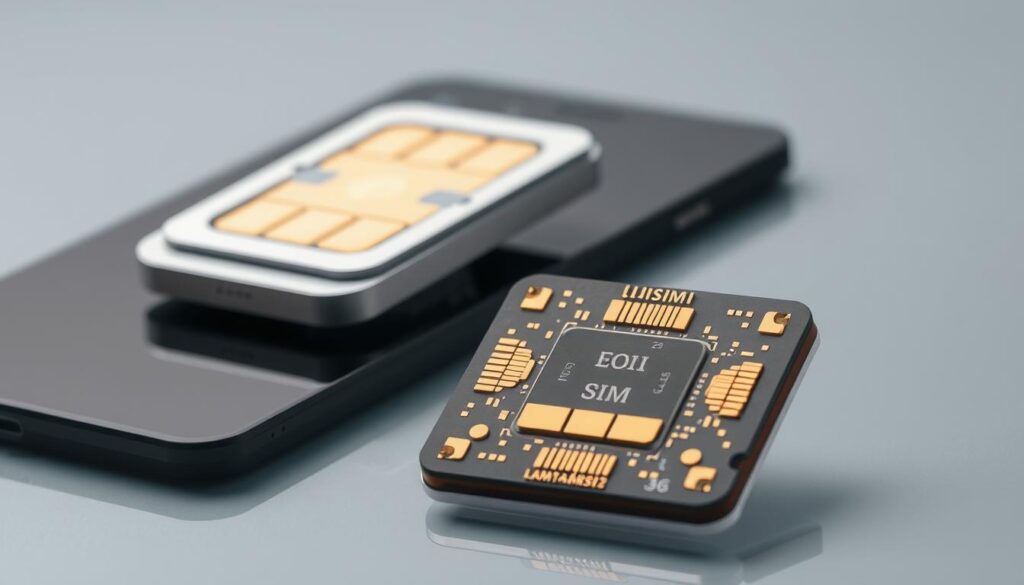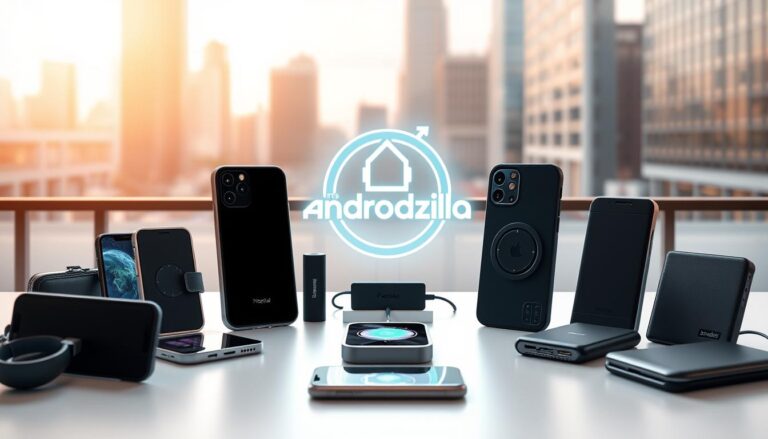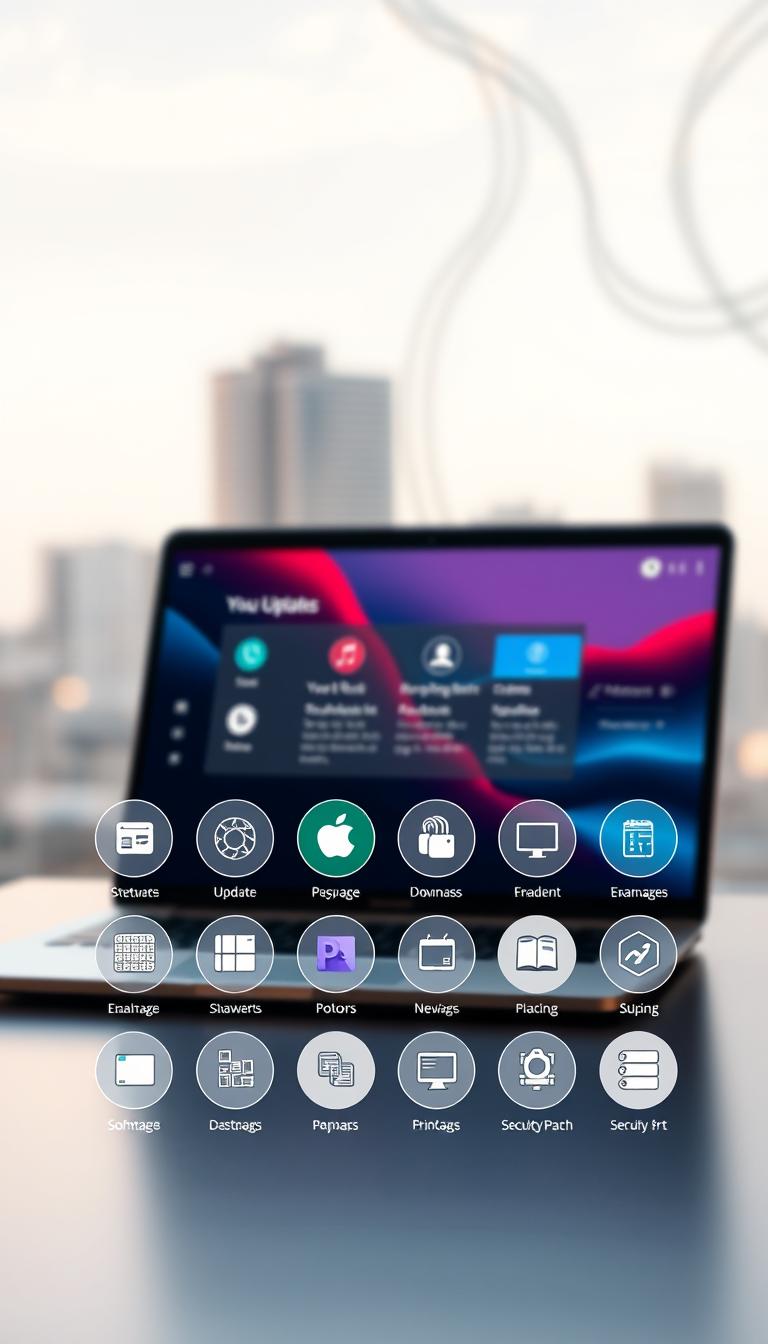
In today’s connected world, our devices hold more than just our phone numbers—they store our personal and professional lives. With the rise of eSIM technology, the way we manage our mobile connections has evolved, offering both convenience and enhanced protection. But how secure is this new technology, and what steps can we take to safeguard our information?
eSIMs, or embedded SIMs, are revolutionizing the way we connect. Unlike traditional SIM cards, they are built directly into your device, making them harder to tamper with physically. This integration also allows for remote provisioning, eliminating the need for physical swaps and enhancing user convenience1. However, while eSIMs are more resistant to physical attacks, digital risks still exist, and understanding these is crucial for maintaining safety.
Throughout this guide, we’ll explore the technical features of eSIMs, the risks they face, and the best practices to keep your data secure. Whether you’re new to this technology or looking to deepen your knowledge, we’re here to help you navigate the world of mobile safety with confidence.
Key Takeaways
- eSIMs are embedded in your device, making them harder to physically tamper with.
- Remote provisioning eliminates the need for physical SIM swaps, enhancing convenience1.
- While eSIMs are more secure against physical attacks, digital risks like phishing remain.
- Good cybersecurity practices, such as two-factor authentication, are essential for protection.
- eSIM technology is growing rapidly, with over 30% of mobile devices shipped in 2022 being eSIM-enabled1.
Introduction: The Evolution of eSIM Technology
The way we connect to mobile networks has transformed dramatically over the years. From the first SIM card introduced in 1991 to the embedded SIMs of today, the journey has been one of innovation and convenience2. This evolution has reshaped how we access services and stay connected.
Overview of eSIM Functionality
An eSIM, or embedded SIM, is built directly into your device. Unlike traditional SIM cards, it eliminates the need for physical swapping. This allows for remote provisioning, making it easier to switch networks or activate new services3.
With eSIMs, users can store multiple operator profiles on a single device. This flexibility is particularly useful for travelers who need to switch to local plans without changing physical cards3.
The Growing Importance of Mobile Safety
As mobile technology advances, so do concerns about data privacy and protection. eSIMs offer enhanced safety by reducing the risk of physical tampering. However, digital threats like phishing remain a challenge.
Regulatory frameworks in countries like the USA and Germany prioritize consumer protection. These measures ensure that eSIM technology balances innovation with safety3.
| Feature | Traditional SIM | eSIM |
|---|---|---|
| Physical Swapping | Required | Not Required |
| Remote Provisioning | Not Supported | Supported |
| Multiple Profiles | Single Profile | Multiple Profiles |
The future of mobile connectivity lies in technologies like eSIMs. By 2025, 83% of smartphone shipments are projected to be eSIM-enabled2. This shift highlights the growing demand for seamless and secure connections.
Understanding esim security: Features and Protocols
Mobile connectivity has reached new heights with advanced technologies reshaping how we stay connected. Embedded SIMs, or eSIMs, are at the forefront of this evolution, offering enhanced protection and convenience. Let’s dive into the core features that make this technology secure and reliable.

Secure Elements and Advanced Encryption
One of the standout features of eSIMs is their integration with a Secure Element (SE). This tamper-resistant platform hosts applications and cryptographic data, adding an extra layer of protection. Combined with advanced encryption protocols like AES and TLS, eSIMs ensure that data remains safe during transmission4.
These encryption standards are designed to resist attacks, including cloning and malware. This makes eSIMs a robust choice for safeguarding sensitive information4.
Authentication and Carrier Management
Authentication is another critical aspect of eSIM security. Protocols like multi-factor authentication (MFA) prevent unauthorized access to mobile networks. This ensures that only verified devices can connect, reducing the risk of fraudulent activity5.
Carrier management also plays a vital role. The SM-DP+ (Subscription Manager – Data Preparation +) prepares and protects operator profiles, while the SM-SR (Subscription Manager – Secure Routing) manages their status. This dual-layer approach maintains the integrity of eSIM profiles6.
“The integration of secure elements and advanced encryption makes eSIMs a game-changer in mobile safety.”
| Feature | Traditional SIM | eSIM |
|---|---|---|
| Encryption | Basic | Advanced (AES, TLS) |
| Authentication | Single-factor | Multi-factor (MFA) |
| Profile Management | Manual | Remote (SM-DP+, SM-SR) |
These features highlight why eSIMs are a secure choice for modern devices. By combining encryption, authentication, and carrier management, they offer a comprehensive solution for mobile safety.
Assessing the Risks: SIM Cloning, Swapping, and Hacking
As technology evolves, so do the methods used by hackers to exploit vulnerabilities. While embedded SIMs offer enhanced protection, they are not immune to sophisticated attacks. Understanding these risks is crucial for safeguarding our devices and sensitive information.

⭐️ Tap the exclusive deal link https://temu.to/k/uot8tcxvwum to score top-quality items at ultra-low prices. 🛍️ These unbeatable deals are only available here. Shop now and save big! ⭐️ Directly get exclusive deal in Temu app here: https://app.temu.com/m/mhb5rstagbx
Another surprise for you! Click https://temu.to/k/uag0bn0o0wd to earn with me together🤝!
Analyzing SIM Swapping and Cloning Vulnerabilities
SIM swapping is a growing threat where attackers trick mobile carriers into transferring a victim’s number to a new SIM card. This allows them to intercept calls and access accounts. In the UK alone, over 5,000 individuals fell victim to these scams last year, with an average loss of £4,000 per victim7.
Cloning, on the other hand, involves duplicating a SIM card to gain unauthorized access. While eSIMs are harder to clone physically, attackers can still exploit provisioning vulnerabilities. Cybercriminals often target mobile carrier stores, which are considered soft targets for such attacks7.
Evaluating Hacking Threats in Connected Devices
Hackers use various methods to compromise connected devices, including phishing and malware. These attacks can lead to unauthorized access to profiles and sensitive data. Research shows that malware targeting mobile devices has risen by 25% in the past year8.
One significant risk is the interception of two-factor authentication codes sent via SMS. This can result in compromised accounts and financial losses. For example, in the U.S., nine individuals were charged in a SIM swapping scheme that led to a $224 million lawsuit9.
“The rise in SIM swapping and cloning highlights the need for robust digital protection measures.”
To mitigate these risks, users should enable multi-factor authentication and monitor account activity regularly. These steps can significantly reduce the likelihood of unauthorized access and protect sensitive information8.
Enhancing Mobile Safety with Best Practices
Protecting our mobile devices has never been more critical in an era of constant connectivity. With cyber threats on the rise, adopting the right measures can make all the difference. Let’s explore some best practices to keep your phone and information secure.

Implementing VPNs and Anti-Malware Solutions
A VPN (Virtual Private Network) encrypts your internet connection, shielding your data from prying eyes. This is especially important when using public Wi-Fi, where 54% of users fail to take precautions, leaving them vulnerable to attacks10. Pairing a VPN with anti-malware software adds another layer of protection, blocking malicious software from compromising your device.
Anti-malware solutions scan for threats like phishing and ransomware. Studies show that 30% of users have experienced phishing attacks targeting their mobile devices10. By using these tools, you can significantly reduce the risk of unauthorized access.
Maintaining Regular Software Updates and Security Audits
Keeping your device updated is one of the simplest yet most effective ways to stay secure. Regular software updates patch known vulnerabilities, reducing risks by 60%10. However, 47% of users neglect this step, leaving their phone exposed to threats10.
Conducting routine security audits is equally important. Organizations that perform audits are 50% more likely to identify vulnerabilities before they’re exploited11. These audits help ensure that your device and information remain safe from evolving threats.
| Best Practice | Benefit |
|---|---|
| Use a VPN | Encrypts internet traffic, protecting data |
| Install Anti-Malware | Blocks malicious software and phishing attempts |
| Update Software | Patches vulnerabilities, reducing risks |
| Conduct Security Audits | Identifies and fixes potential weaknesses |
By integrating these best practices into your daily routine, you can enhance your mobile safety and stay one step ahead of cyber threats. Remember, a proactive approach is the key to keeping your device and information secure.
eSIM vs. Physical SIM: A Comparative Security Analysis
The debate between eSIM and physical SIM cards centers on their security and convenience. Both options have unique strengths and weaknesses, making it essential to understand their differences. Let’s explore how they compare in terms of physical safety, tracking challenges, and unauthorized access concerns.

Physical Security Advantages of eSIM Cards
One of the standout benefits of eSIMs is their physical security. Unlike traditional SIM cards, which can be easily removed or tampered with, eSIMs are embedded directly into the device’s hardware. This makes them less prone to theft or physical interference12.
Additionally, eSIMs can be locked to specific devices, enhancing their safety. This feature makes it difficult for stolen SIMs to be used in other devices, reducing the risk of unauthorized access12.
Tracking Challenges and Unauthorized Access Concerns
Tracking a device is often tied to its unique identifiers rather than the type of SIM it uses. However, eSIMs offer added protection by eliminating the need for physical swapping, which can expose the device to risks13.
Unauthorized access remains a concern for both systems. While physical SIM cards are vulnerable to cloning, eSIMs rely on carrier-managed authentication to prevent such threats. This dual-layer approach ensures that only verified devices can access the mobile network13.
“The integration of eSIM technology reduces the risk of theft and cloning, offering a more secure alternative to traditional SIM cards.”
| Feature | Physical SIM | eSIM |
|---|---|---|
| Physical Security | Prone to theft | Embedded, harder to tamper |
| Tracking | Device identifiers | Device identifiers |
| Unauthorized Access | Cloning risks | Carrier-managed authentication |
In summary, eSIMs offer enhanced physical security and convenience, while physical SIM cards remain widely used but more vulnerable to tampering. Understanding these trade-offs can help users make informed decisions about their mobile connectivity.
Conclusion
In the ever-evolving landscape of mobile technology, staying informed is key to protecting your digital life. Throughout this guide, we’ve explored how eSIMs offer enhanced physical safety compared to traditional sim cards, reducing risks like theft and tampering. However, no system is entirely immune to digital threats, making vigilance essential.
We’ve highlighted the technical features of eSIMs, such as remote provisioning and advanced encryption, which streamline connectivity while safeguarding your information. Yet, risks like phishing and unauthorized access remain, underscoring the need for proactive measures. Regular updates, strong passwords, and monitoring account activity are crucial steps to mitigate these threats14.
As the adoption of eSIM technology grows, it’s vital to stay informed and proactive. By adopting best practices and understanding the risks, you can ensure your device and network remain secure. Take charge of your mobile safety today and stay one step ahead in this connected world.
FAQ
What makes eSIM technology more secure than traditional SIM cards?
How does authentication work with eSIMs?
Can eSIMs be hacked or cloned?
What are the best practices for enhancing mobile safety with eSIMs?
Are there any risks of unauthorized access with eSIMs?
How does eSIM technology handle sensitive information?
What are the advantages of eSIMs in terms of physical security?
Can I switch carriers easily with an eSIM?
How do eSIMs protect against SIM swapping attacks?
What should I do if my eSIM-enabled device is lost or stolen?
Source Links
- https://www.globalyo.com/blog/esims-101-is-esims-safe/ – eSIMs 101: Is eSIMs safe? | Global YO
- https://www.mobiliseglobal.com/when-did-esim-come-out-who-invented-esim-the-history-of-esim/ – When did eSIM come out? Who invented eSIM? – eSIM history
- https://www.globalyo.com/blog/the-evolution-of-esim-regulations-and-policies-in-the-usa/ – The Evolution of eSIM Regulations and Policies in the USA | Global YO
- https://terminalesim.com/understanding-the-security-features-of-esim-technology/ – Understanding the Security Features of eSIM Technology – terminalesim.com
- https://www.p1sec.com/blog/esim-security-ensuring-trust-in-the-era-of-digital-sims – eSIM Technology: Balancing Innovation and Security in Mobile Networks
- https://www.gsma.com/esim/wp-content/uploads/2018/12/esim-whitepaper.pdf – PDF
- https://www.stationx.net/esim-vs-sim-card-which-is-more-secure/ – eSIM vs SIM card: which is more secure?
- https://www.globalyo.com/unveiling-the-potential-security-risks-of-esim-technology/ – Potential Security Risks of eSIM Technology Unveiled [2024] | Global YO
- https://securityintelligence.com/posts/clone-or-swap-sim-card-vulnerabilities-to-reckon-with/ – Clone or Swap? SIM Card Vulnerabilities to Reckon With
- https://www.globalyo.com/ensuring-esim-mobile-device-safety-a-comprehensive-guide/ – Ensuring eSIM Mobile Device Safety [2024]: Comprehensive Guide | Global YO
- https://www.globalyo.com/enhancing-security-a-comprehensive-guide-to-esim-setup/ – Comprehensive Guide to eSIM Setup [2024]: Enhancing Security | Global YO
- https://www.riotimesonline.com/esim-vs-traditional-sim-a-comprehensive-comparison/ – eSIM vs. Traditional SIM: A Comprehensive Comparison
- https://cybersecuritynews.com/esim-and-physical-sim-card-security/ – Comparative Analysis of eSIM and Physical SIM Card Security
- https://www.globalyo.com/esim-vs-physical-sim-comparing-security-features-and-risks/ – eSIM vs Physical SIM: Security Features Compared [2024] | Global YO






